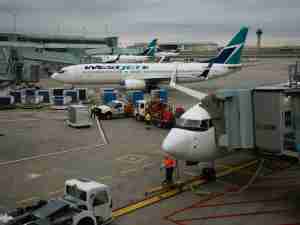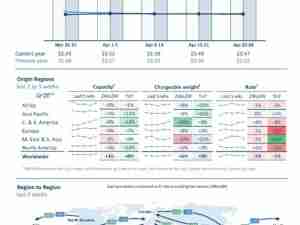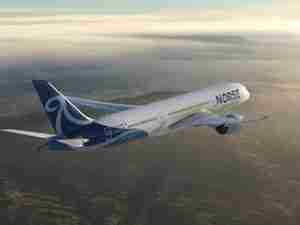U.S. airlines rallied as improved summer leisure bookings and rising fares offered strong signs of a recovery a year after Americans began staying close to home.
Sales over the past three weeks have been the best since the coronavirus pandemic began, American Airlines Group Inc. said, while United Airlines Holdings Inc. said high demand for spring and summer travel resulted in positive core cash flow this month. JetBlue Airways Corp. and Southwest Airlines Co. said they see first-quarter revenue declining less than they originally expected.
“We’ve seen some glimmers of hope over the course of the last year, but this seems like it’s real,” Delta Chief Executive Officer Ed Bastian Monday at a JPMorgan Chase & Co. conference. “It seems substantive. Although we have a long ways to go yet, we are in a much better place than we have been in a good period of time.”
The projections appeared to be early signs of the surge in demand that carriers had been forecasting as Covid-19 case growth slowed and more U.S. residents get vaccinated. Demand continues to focus on beach and mountain destinations where travelers have sought to escape pressures of the pandemic.
United advanced 8.2% to $60.91 at 1:25 p.m. in New York, leading a Standard & Poor’s index of nine U.S. carriers. American, up 7% to $25, and JetBlue, rising 5.6% to $21.59, rounded out the top three. Other airlines posted solid gains despite a weak broader market. The broad Standard & Poor’s airline index had advanced 32% this year through March 12.
U.S. airlines carried more passengers on Friday and Sunday than at any point since March 16, 2020, when the pandemic erupted and caused a steep decline in air travel. Both days exceeded 1.3 million passengers, according to the Transportation Security Administration.
American’s March bookings are “coming close” to where they were at the same point in 2019, Chief Executive Officer Doug Parker said at the conference, although they’re not producing a comparable amount of revenue because ticket prices have been discounted. American and United are raising fares for summer travel, however, as planes fill up.
“The crisis isn’t over, but we certainly are seeing what looks like the beginning of a very large uptick,” he said.
Consumers are likely to fly more frequently as the pandemic wanes because many people “already bought a new washing machine” or made other purchases and now feel free to spend discretionary funds on travel, United Chief Executive Officer Scott Kirby said. The carrier expects that business travel will begin “in earnest” next year and return to 2019 levels in 2023, he said.
Delta projects corporate demand “slowly but steadily building back” as workers begin returning to offices later this year, said President Glen Hauenstein.
Consumers are purchasing tickets for spring break until autumn, the carrier said in regulatory filing. That marks a hopeful change from earlier in the pandemic, when they booked travel only shortly in advance because of the uncertain outlook. While daily cash sales have improved 30% this month from February, Delta said it expects that first-quarter revenue will be at the low end of its previous outlook of down 60% to 65% from 2019.
JetBlue said in a regulatory filing that first-quarter revenue would decline as much as 64% from the same period in 2019. The carrier previously forecast that the figure could be down as much as 70% from two years ago. Though “trends remain choppy,” bookings have improved for vacation travelers and people visiting friends and family, the New York-based carrier said.
Southwest also said demand and fares are rising. The Dallas-based airline projected that revenue would fall as much as 60% in March, compared with an earlier outlook for a decline that could reach 65%.
“With vaccine numbers going up and case numbers going down, there’s a light at the end of this very long tunnel,” CEO Gary Kelly said in his weekly message to employees.








